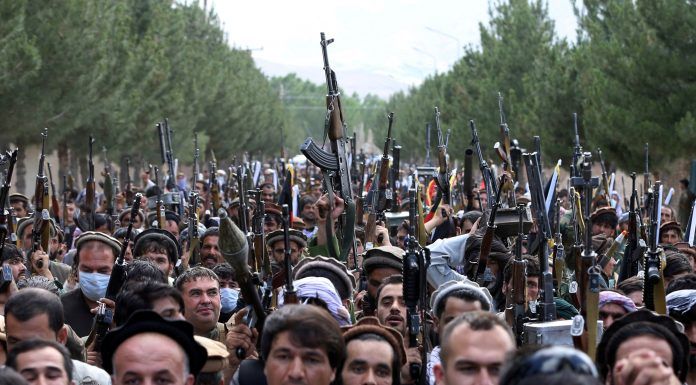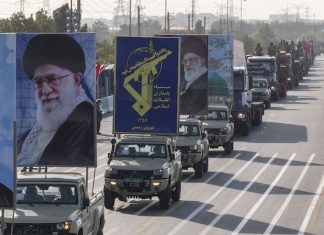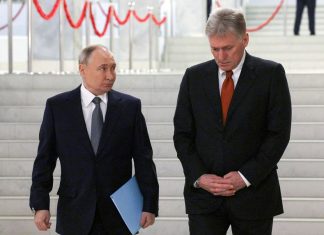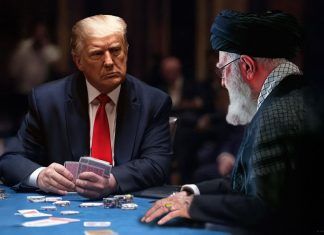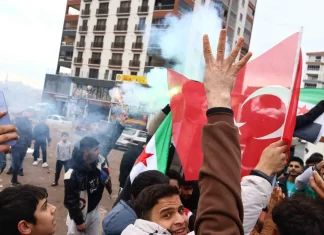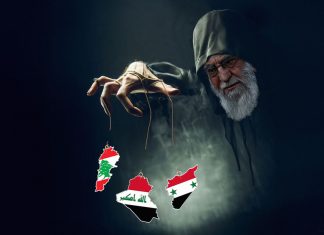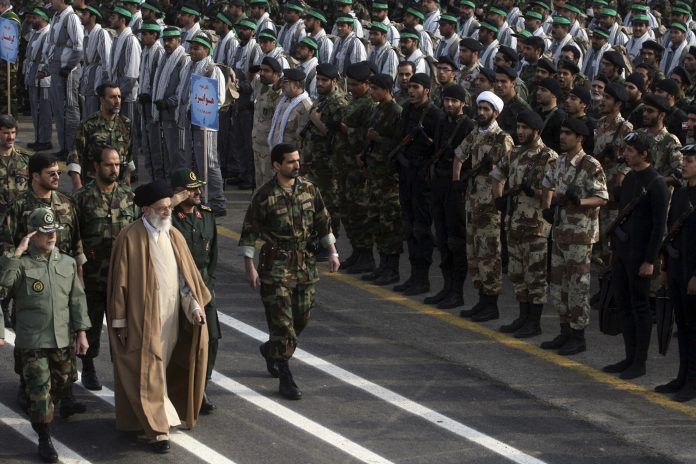
By Kayhan Life Staff
Afghanistan is facing yet another crisis with Taliban forces extending territories under their control. The reactionary group, known for its inhumane treatment of Afghan citizens, has occupied several cities recently.
The Afghan people, whose memory of the Taliban’s unimaginable brutal and bloody rule is still fresh, have been watching in utter disbelief as their cities fall to the group’s forces with little fightback from the Afghan army and security forces.
“That these cities have fallen with little or no resistance shows that there are some hidden forces at work,” Gulbuddin Hekmatyar, the leader of the Hezb-e-Eslami Gulbuddin (HIG), said recently. “Elements within the Afghan government have a hand in the fall of these cities.”
Many political observers have warned that the Afghan National Army and security forces cannot protect the country’s territorial integrity and maintain peace and security after the withdrawal of the U.S. military.
The worsening of conditions in Afghanistan has led to the firing of Asadullah Khalid, the head of the National Directorate of Security (the domestic intelligence agency), and Lieutenant-General Yasin Zia, the Army Chief of Staff.
According to some reports, Iran has deployed several armies and the Islamic Revolutionary Guards Corps (IRGC) units to the border with Afghanistan. Footage posted on social media reportedly showed the IRGC and army forces on the Afghan border, but the Iranian military has made no official announcement yet.
The question remains whether Tehran considers the Taliban’s increasing power and influence in Afghanistan as a threat or an opportunity, given that Iran has become a pariah state.
Meanwhile, analysts say the election of Ebrahim Raisi as Iran’s new president will tighten the hardliners’ control over the three branches of government and boost support for Tehran’s extraterritorial activities.
Mr. Raisi, who gets his orders from Mr. Khamenei, might use Iran’s seemingly close ties to China and Russia as a bargaining chip in his negotiations with the U.S. on rebooting the Joint Comprehensive Plan of Action (JCPOA), better known as the Iran nuclear deal, and the country’s ballistic missile program and regional activities.
These policies will only yield results if the West is soft in its position and shows flexibility in dealing with Tehran.
Although the West is not currently inclined to appease Iran, the Islamic Republic has been planning to use Afghanistan as a new base of operation against the West for some time now. Before Iraq became Iran’s backyard, following the overthrow of Iraqi Leader Saddam Hussain in 2003, the Taliban, Al-Qaeda, and other terrorist groups did the Islamic Republic’s bidding in the region.
A delegation of senior Taliban officials traveled to Tehran in January and held talks with Foreign Minister Mohammad Javad Zarif and Rear Admiral Upper Half Ali Shamkhani, the Supreme National Security Council Secretary.
Around the same time, Ahmad Naderi, a member of the Islamic Revolutionary Committee of the Majlis (Iranian Parliament), told the English-language Tehran Times: “The first generation of the Taliban reflected brutality and violence and committed massacres against many Afghans, especially Shias.”
“Certainly, the Taliban, like many other movements, has changed, and the new generation of the movement differs from the previous generation,” Mr. Naderi added.
Naderi’s comments coincided with a series of terrorist operations in Afghanistan carried out by the Taliban, killing dozens of innocent Afghans.
Following a meeting with the Taliban delegation, Admiral Shamkhani tweeted: “In the meeting with the Taliban political delegation earlier today, we understood that the organization’s leadership is resolved in its efforts to fight America. A person who was imprisoned at Guantanamo Bay for 13 years has not abandoned the fight in the region.”
According to the Western intelligence sources, many senior Al-Qaeda and Taliban leaders live in Iran. Iranian security forces banned domestic media from reporting on a gathering of Taliban delegation in Tehran Park Melat in January. The police also confiscated all photographs of the event.
Iranian leaders and hardline media close to Iran’s Supreme Leader Ayatollah Ali Khamenei have attempted to change the Taliban’s image in the past couple of years.
In its June 25 editorial titled “What Is Happening in Afghanistan,” the Tehran-based hardline Kayhan newspaper said: “Today’s Taliban differ from the ones we knew who beheaded people. Taliban has said this clearly, but we must find for ourselves if these claims are true.”
“According to Afghan observers who live in Iran, Taliban is not a unified and homogenous group,” the paper noted. “Many of its members include war victims and young people who have lost their families during the turmoil, and joined the group because they are poor, and desperate or need to make a living or even for revenge.”
“A large segment of the Afghan population, which distrusts their government, seeks help and advice from Taliban elders instead of the government,” the paper added.
Despite Kayhan’s editorial, footage on social media shows Taliban forces assaulting and brutalizing Afghan citizens.
In its June 26 editorial titled “After U.S. Afghanistan Withdrawal, Will Pakistan, Iran and Turkey Take Over?”, The Jerusalem Post said: “Moves by Turkey, Pakistan and Iran are afoot to fill the void left by the US as Washington draws down its last troops from Afghanistan after two decades of war there. The Taliban is advancing on various fronts, and there are concerns that when America and its partner forces from other countries in NATO leave, instability and terror could spread.”
Liwa Fatemiyoun (Fatemiyoun Brigade), the Shia Afghan forces fighting in Syria under the auspices of the IRGC, could be Iran’s military arm in Afghanistan.

